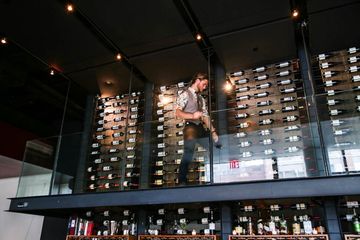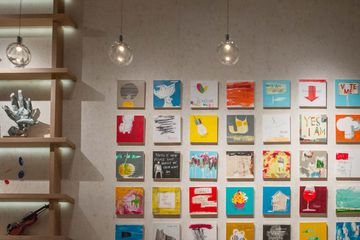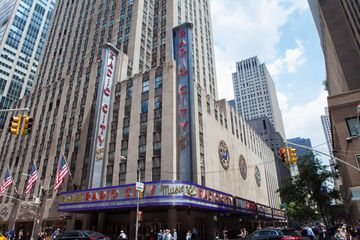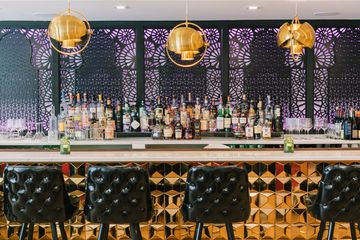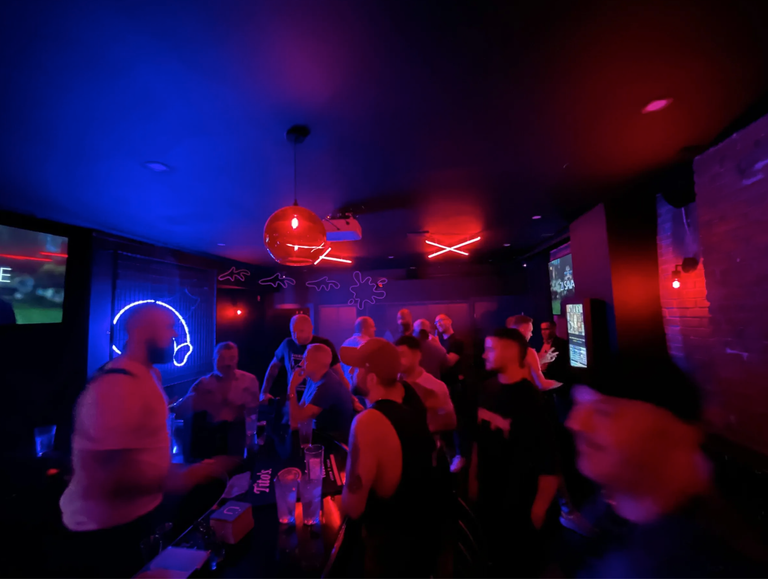
FLEX is a new Hell’s Kitchen LGBTQ+ hotspot created in the former home of Posh — one of the original neighborhood gay bars back in the ’90s.
Founders James Healy and Jason Wade Mann’s journey to open FLEX hasn’t been without its challenges. The process began with six months of paperwork to obtain a liquor license from the State Liquor Authority. Though they received approval from Manhattan Community Board 4’s Business Licenses and Permits Committee, lingering complaints about the previous establishment set the bar very high for proving FLEX would not fall into the same pattern. However, this meticulous attention to detail set the tone for what was to come.
The bar’s design was a collaboration with two architects from Pratt Institute, who worked closely with students to ensure every aspect was carefully considered. James and Jason had the opportunity to shape FLEX exactly as they envisioned, with a focus on creating a visually stunning atmosphere. Local artist Jo Mar crafted the hand-sculpted mural that takes center stage. It is based on a photo shoot he did in the space with local friends who were more than happy to help bring his vision to life. The entire process took seven months to complete, with each of the four panels weighing approximately 250 lbs as the molds were being made.
The attention to detail doesn’t stop at the artwork. The bar boasts original 120-year-old “Tiffany blue” glass windows salvaged from a Brooklyn warehouse, adding a touch of history to the contemporary design. The bar beams themselves come from a century-old Brooklyn townhouse, and the woodwork throughout the space is meticulously handcrafted.
The dedication to preserving the legacy of the location is evident in the decision to keep FLEX as a safe space for the LGBTQ+ community. As James said: “It was a gay space for almost 30 years and that was one of the main reasons Jason and I decided to take over the space. We wanted to keep it as a safe space for the gay community, but very much welcome for all. Our theme is come alone and meet friends, come with friends and make more friends.”
But FLEX is not just about creating a visually appealing space; it also aims to be a hub for community events. With large screens and projectors installed, the bar can host gatherings, presentations and even screen major sporting events. This versatility ensures that FLEX will be a vibrant and dynamic addition to the neighborhood.
Beyond the interior, the owners have also made significant efforts to enhance the building’s infrastructure and exterior. Extensive plumbing work was completed and the façade has been meticulously restored, with broken tiles fixed and a fresh coat of paint applied. A new awning, adorned with colorful PRIDE flags, further adds to the bar’s vibrant presence on the block. FLEX aims to be a highlight of the neighborhood, both inside and out.
This story was adapted from the W42ST article, "Reviving PRIDE: New Bar FLEX Honors Posh’s Legacy with a Modern LGBTQ+ Twist."



